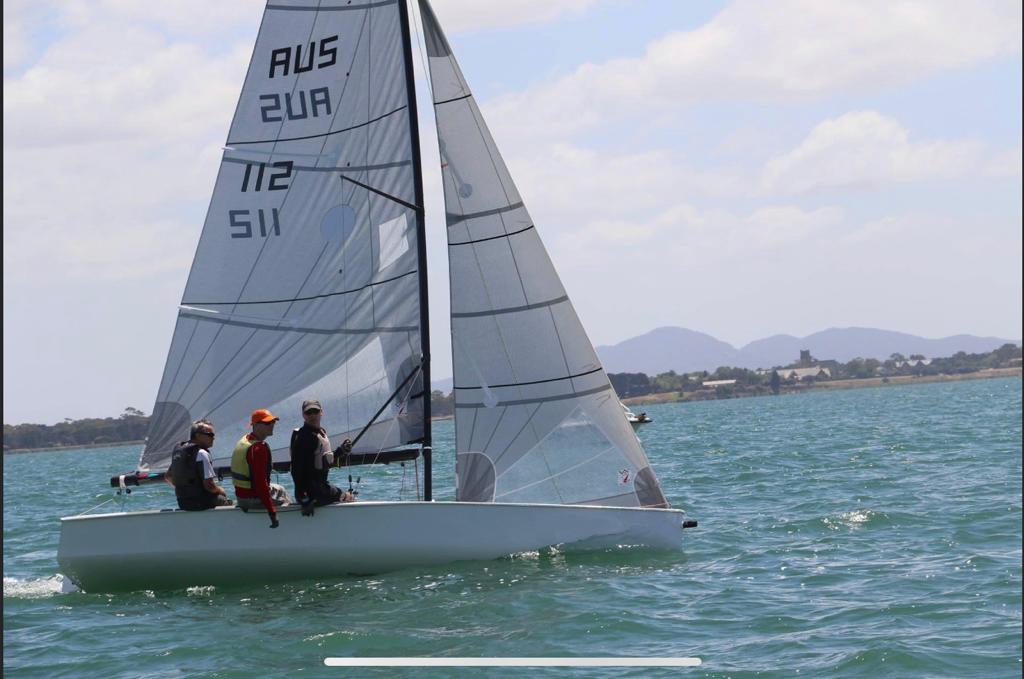
.
These days, for those of us that race, we seem to be doing more and more short, windward-leeward races. The Secrets For Going Fast Upwind will help you to get to the first mark in great shape.
The importance of Good Speed On The Upwind Leg
Arguably the upwind leg, especially the first upwind is the most telling in where we end up at the finish.
Of course, the start is very important but next, it is how we perform getting to the first mark that gives us the best chance of success.
To help us understand how to tackle the upwind legs, I interviewed Noel Drennan. Noel is a hugely accomplished sailor with a number of round-the-world races under his belt. Plus a multitude of National, World and One Design championships with his name against them.
Noel is a senior Sailmaker with North Sails in Sydney Australia. I have copied part of that interview below.
- What’s the most important trim adjustment when you’re going upwind with the velocity up and down?
Noel I think just as simple as it is, it’s just the main sheet, it does so much in all boats, dinghies to keelboats. The main sheet is the absolute key adjustment for the balance and trim.
- I think you are the main sheet trimmer on the Alinghi RC 44?
Noel: Most of the boats I sail on, I’ve been somewhat pigeonholed into a main sheet trimmer position, essentially, I guess because I do a lot of steering. It’s quite often that if you’re steering and you don’t have a very good main sheet trimmer. The work with the balance of the boat more so than just the trim of the sail is key.
For me, that’s the difference between the better main sheet trimmers and headsail trimmers. Main sheet trimmers essentially trim the boat to the overall balance. More so than just looking at the mainsail and reporting “it looks good today.”
-
One of the things I’ve noticed with some keelboat crews is that they feel after it happens, that they are reactive rather than proactive.
Noel: I think that’s been a very important factor for my success that I have the dinghy feel, but I’ve sailed a lot on keelboats, so you’re feeling what’s happening with the boat, it’s loading up or unloading or the mainsheet’s too tight for acceleration, whatever it is.
On a keelboat, you’ll have your instruments package that will quantify that, but if you have the feel from previous dinghy sailing you will be ahead of the instruments and that’s what you need to be.
-
You hear often that you should always sail towards the next shift, is there a reason why you should sail towards the next shift?
Noel: Not really, but it does work out usually as an advantage, it really depends if it’s more likely to be a header on one side of the course or not. I don’t think it’s always a golden rule that you should sail towards the next shift. That’s because it might be a lift and you might end up being to leeward of everybody.
-
How do clouds influence your upwind strategy?
Noel: A pretty big part of it, I’ll always look up and look at the clouds, so if I was sailing in Melbourne, for sure I’d be looking for:
- The sea breeze clouds building on the land or
- With any sort of southerly or westerly, just the cloud formations out to sea, because you’d better be going upwind to them.
Because I’ve done a reasonable amount of ocean racing, and in the Volvo ocean race you sail with really good navigators and when they come up on deck and tell you “look at the cloud, go to the right-hand side of it and you’ll be lifted, or stay away from that one”
You learn what to stay away from or if it’s safe to go towards it, which side of the clouds you’re going to be lifted and which side you’re going to be headed, so I think it’s a pretty important thing to do.
-
Should you sail for puffs or shifts?
Noel: Essentially it’s a little bit to do with the boat. If it’s a boat like in an Etchells if you’re racing in six to eight knots, it’s wind speed. Over probably 10, it’s probably shifting. Downwind in a planing boat, I go for windspeed every time.
-
You’re going out for a training day, what should you practice uphill?
Noel: I like defining my practice time pretty clearly on what the goal is for that particular training period. Essentially, I like to go and say, practice starting and do nothing else but start.
Practice holding off somebody just on the hip more so than just straight-line sailing to see how fast you are. Essentially the more difficult things.
-
What do you look for when trimming upwind sails?
Noel: I’d probably just use the leech ribbons as a bit of a guide in certain conditions to make sure I’m not too over-trimmed. Look at the leech and the telltales in the middle of the sail. Camber-wise, see if they’re lifting or they’re stuck or flowing. Also, look at the backwind from the jib on the luff of the main.
If the backwind is down low in the main, the jib cars are too low or in too far. Try to work towards getting the even backwind across the luff of the main sail.
There are things that I would talk to the jib trimmer about. “Hey, we’ve got a lot of back wind up high” a blowback from the headsail. Those things create the environment for the two of you who are working together on the package. More so than trimming the individual sails.
#sailingtowin #yachtrace #sailing #sailtowin #sailingcoach #sail

